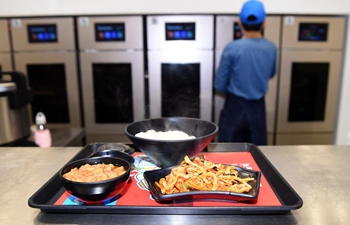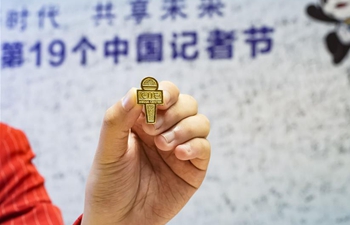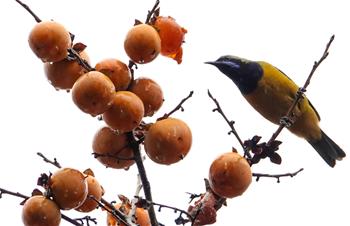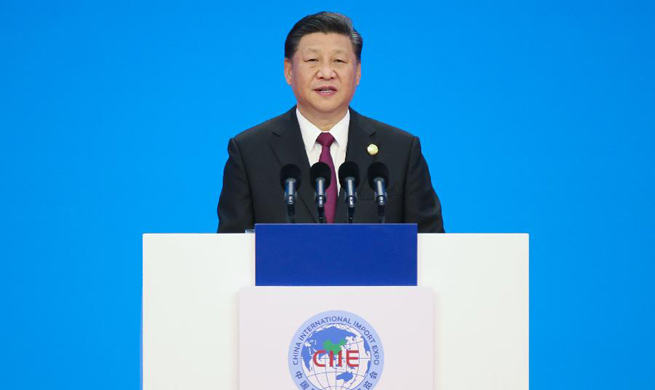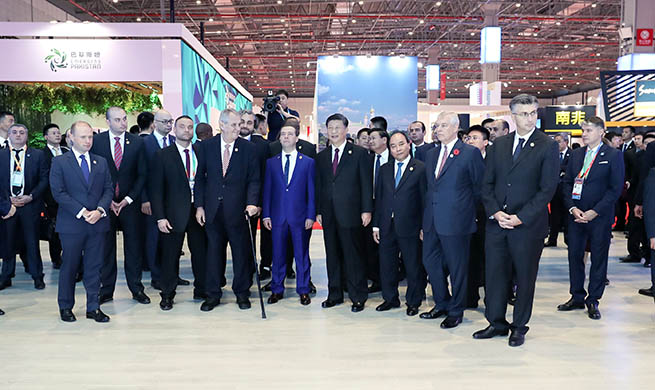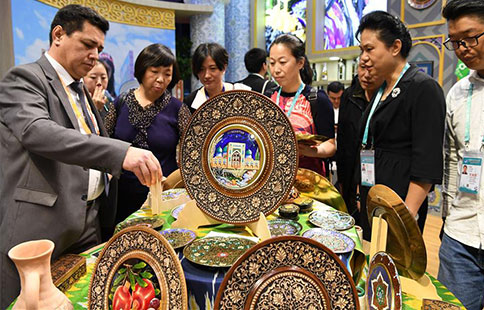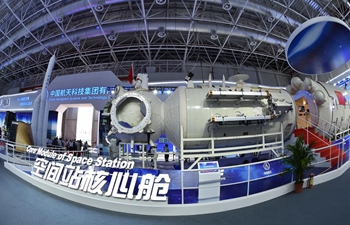KUNMING, Nov. 8 (Xinhua) -- A grain of jasmine rice "jumps" to a freighter in Cambodia. It, together with thousands of its companions, will arrive in China in about a week.
The jasmine rice from Cambodia sells very well in Yunnan, a border province in southwestern China. As a gateway to South and Southeast Asia, Yunnan is currently building itself into a frontier in China's new round of opening-up and pushing forward the development of international trade.
As China transitions to high-quality development and shifts from the world's workshop to the world's market, with the world's biggest middle-income population demanding higher-quality consumer products, the rise of Chinese consumer demand is benefiting the world, definitely also neighboring countries.
RICE AND FLOWER
Li Li bought a ten-kilo bag of Cambodian jasmine rice last month from the Zhijia convenience store near her house in Kunming, capital of Yunnan, for the third time in about five months.
She first learned about this Cambodian premium rice that had won the World's Best Rice award for three consecutive years in June, during the fifth China-South Asia expo held in Kunming.
"A Cambodian company made steamed rice and porridge at its booth. It was amazing, smelled wonderful and tasted delicious," Li said.
Sold for 118 yuan (17 U.S. dollars) per ten kilos, Cambodian jasmine rice is more expensive than average domestic rice, but Xiao Yu, marketing manager of convenience store Zhijia, is nevertheless confident about it.
"Chinese consumers now value quality over price," Xiao said.
Since being introduced in 2017, Cambodian jasmine rice has been on Zhijia's Top 5 Best-Selling Rice List every month, though it is only available in less than 20 of a total of about 200 Zhijia convenience stores in Yunnan.
Not far from the store near Li's home stands the Kunming International Flora Auction Trading Center in Dounan Village, the largest of its kind in Asia, which is crowded with anxious dealers waiting to sell their carefully planted beauties.
Before every dawn, about 10 million radiant China-grown flowers of more than 500 species make their way to over 50 countries and regions, about 30 percent of which are exported to South and Southeast Asia.
Cambodian rice and Kunming flowers define China's blooming trade with its neighbors. Statistics from Yunnan customs show that the total export and import volume in the province has increased by more than 200 times over the last 40 years, from 104 million U.S. dollars in 1978 to over 23 billion U.S. dollars in 2017.
RAIL AND FLIGHT
Imported products were considered luxuries in Yunnan 40 years ago. Finding them was difficult. However, from Sri Lanka's Ceylon tea to India's blue crab, and from Thailand's durian to Myanmar's jade, the "impossible" has become the possible, and is even a daily necessity now, especially thanks to the expansion of international transportation links.
Yunnan has already opened air routes from its capital and to major cities in almost all South and Southeast Asian countries, giving ease of way to more imports and exports.
"Frequent trade between China and its neighboring countries, especially under the Belt and Road Initiative in recent years, has driven fast growth in Yunnan's international freight volume, which reached more than 57,000 tonnes last year, up over 130 percent year on year," said Gu Min, head of Yunnan Airport Logistics Co. Ltd.
From January to November this year, more than 450,000 tonnes of cargo have been transported along the Yunnan-Haiphong railway that connects China and Vietnam, with imports accounting for about 40 percent.
To boost regional trade, several rail lines starting in Kunming are also under construction or in the planning process. They are expected to run through Vietnam, Laos, Myanmar, Thailand, Cambodia and Malaysia before reaching Singapore, forming eastern, central and western lines of international rail transportation to connect China with Southeast Asian countries.
CULTURAL EXCHANGE AND EDUCATION
Besides commodities, China's wider opening-up is also facilitating cultural exchanges with its neighbors.
In 2015, the first China-India yoga college was established at Yunnan Minzu University, attracting batches of Indian yoga teachers to China, with 38-year-old Subbulakshmi Velusamy being one of them.
"Relax your breath and mind. Cross your legs and flex your feet. Don't let your knees be higher than the level of your hips. Bring your hands to your heart. Don't allow your chest to sink," Velusamy says every day, imparting her skills with great enthusiasm while observing and correcting her students after demonstrating movements.
Yoga has become immensely popular in China with millions taking to it all over the country. Last year, the China-India yoga college started enrollment for master's courses. It plans to open 50 branches in China with the first being launched in central China's Henan Province in August.
Overseas students are messengers of cultural exchange, the number of which in Yunnan had exceeded 18,000 by the end of last year.
As a postgraduate majoring in Chinese, 24-year old Patchara Pukchainam came to Yunnan University from Thailand about a year ago.
"I will go back to Thailand to teach Chinese after graduation," she said. "Learning Chinese means more opportunities. It's quite easy to find a good job in Thailand if you can speak fluent Chinese."





